Do Squats Work Calves? Variations & Alternatives Explained
Author:
Reviewed by:
(21 years of Oly Lifting experience)
Unlock your full potential by engaging with our experts and community! Have questions about your fitness journey or looking for expert advice on weightlifting techniques? Don’t hesitate — leave a comment below and Jason Li will provide a personalized answer and insights to help you reach your goals.
Torokhtiy is reader-supported. Some links are affiliate links, and we may earn a commission at no extra cost to you. See our disclosure page for details.
What’s a leg day without a couple of squats? Squats are one of those basic exercises everybody does. You’ll see complete beginners doing squats, and you’ll also see pros doing them all the time. Why? That’s easy – squats just work. They’re one of those no-nonsense exercises that just do their job, and they can do wonders for your lower body. But does that include your entire lower body, and do squats work calves?
That’s what we’re delving into today – Do squats make your calves bigger? We’ll get a little bit more familiar with calves and see if we can get a clear and concise answer to that question. Defined calves are a must, so let’s see if squats can be a secret weapon to getting them.
And let’s check if the squat will produce calftastic results!
Do squats work calves? To a certain extent, yes, they do. Squats focus mainly on your glutes and quads, but since you need to remain stable throughout the movement, your calf muscles get activated, too.
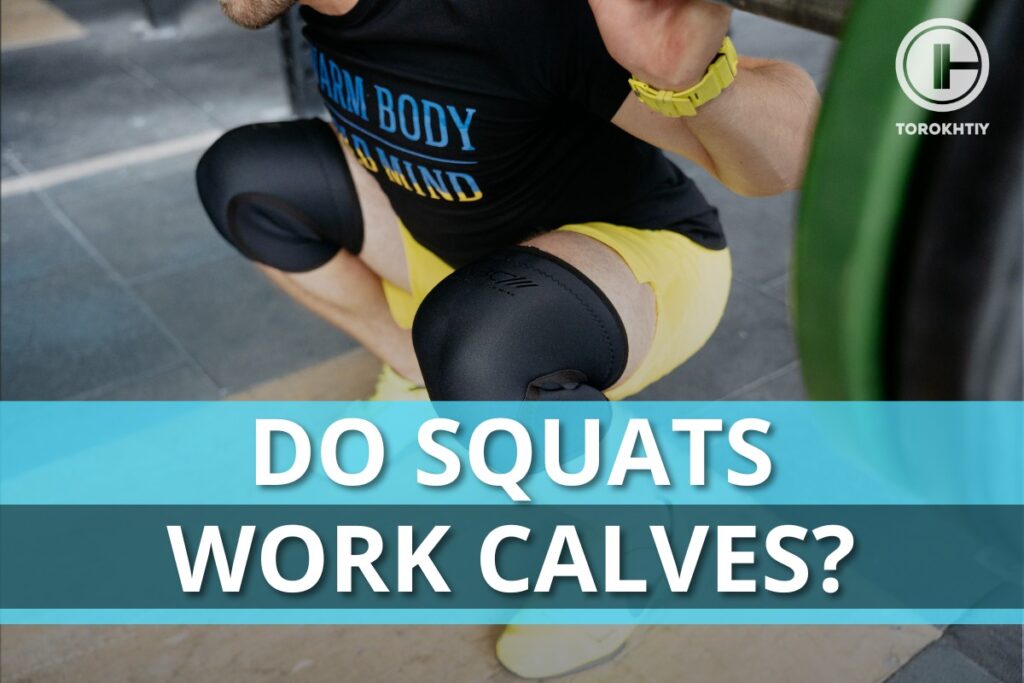
Do Squats Work Calves?
A yes-or-no answer won’t really work in this situation because the first thing you need to do is to understand the calves’ anatomy. Calves have two primary muscles: the gastrocnemius and the soleus.
The part of your calf that’s more visible and more prominent to you is the gastrocnemius, which extends across the upper region and contributes a lot to knee flexion. The soleus is just below the gastrocnemius. It’s a deeper muscle that helps you move at the ankle joint point, and it plays a big role in keeping you stable.
When you look at the mechanics of the squat, you see that its primary focus are your glutes and quads. However, your calf muscles still play a role, although it’s more a supportive role. As you lower your body into the squat, you engage your calves to stabilize the ankle joint, prevent excessive movement, and ensure that your descent is controlled and not all over the place. As you return to the standing position, the calves are activated again because they help lift you up.
Keep in mind that squats aren’t one of the exercises that are meant to target your calves. Squats are a compound movement that engage a lot of muscles at the same time, including major leg muscles, but not all of these muscles are engaged in the same way or with the same intensity. Calves are super important in terms of keeping your body stable and able to do squats, but squats give most of their attention to glutes and quads.
Of course, doing squats can’t hurt and if you include them into your routine (even if it’s one that focuses mostly on your calves), they’ll play a part in developing defined calves and promoting strength in your lower body. Squats are known to stimulate the release of testosterone and growth hormone, and without them, there’s no muscle growth in general.
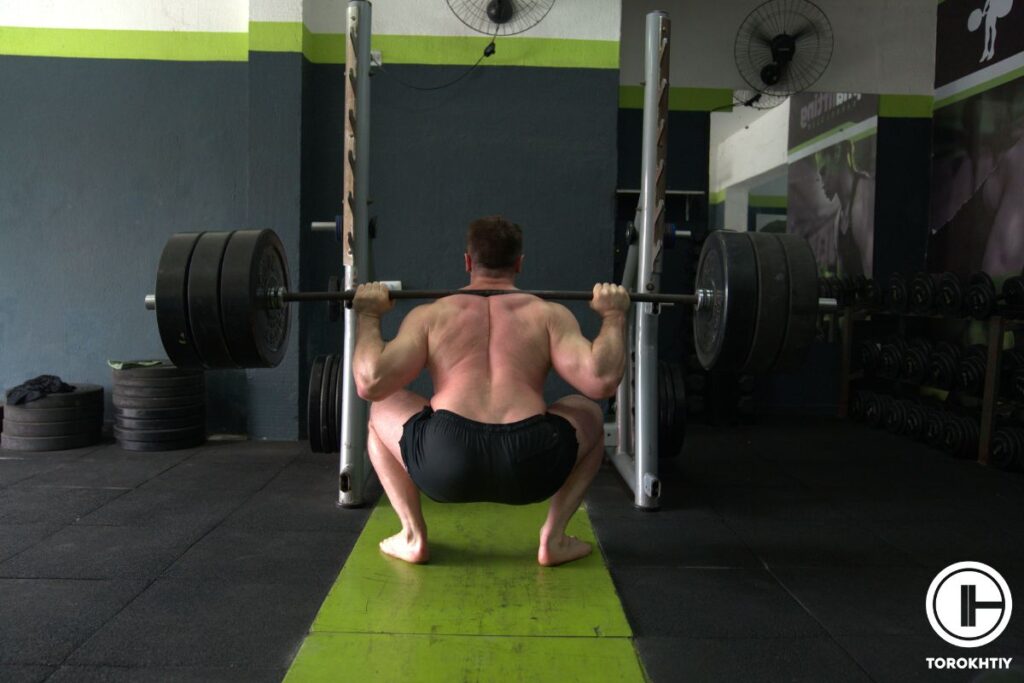
If you want to work on your calves specifically, you may want to do some exercises that target them directly, like standing calf raises. You want to do isolated movements because they give a more concentrated and direct load on the calf muscles, so over time, your calves will get stronger and more defined. Squats aren’t really your shortcut to sculpted calves, but they have their benefits, and they’ll definitely work on your calves a bit.
🔻GET A FREE PROGRAM DEMO: 12 Week Squat Program by Oleksiy Torokhtiy
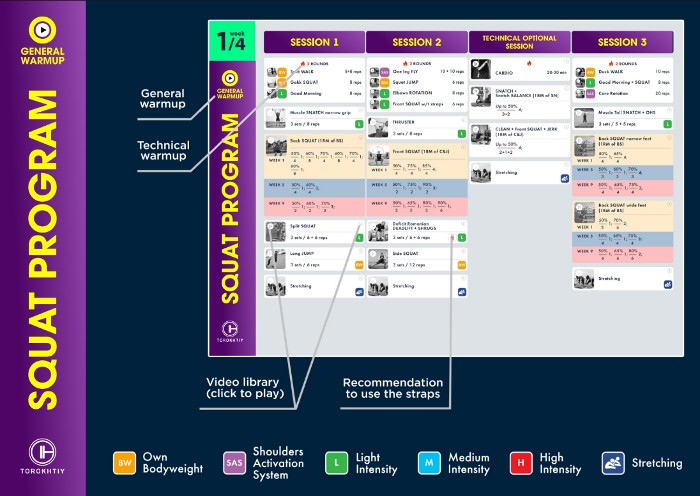
Do you want to double your squat strength? In just 12 weeks, you’ll be able to boost your squat results.
Enter your details and get a free demo (1 free week) of the squat program straight into your inbox.
1. Are Squats Effective for Calves?
In all honesty, it depends on what you expect squats to do for your calves. If you want defined, big calves and you want to achieve that by doing squats; you won’t have any luck with it.
But if you have an established routine and want something to complement your other, calf-focused exercises, then squats are a good way to go. Besides, an effective training routine has lots of variety to keep the plateaus at bay.
Your calves aren’t the main focus when doing squats, but squatting will be a nice addition to your routine. During squats, your calves act as stabilizers during the lowering phase, and they contribute to the lifting motion, so even though they don’t get the bulk of the attention, they still get engaged, which means the muscles work during the movement. It boils down to what you want the squats to do – to be a complementing part of your workout or a shortcut to getting big calves. If it’s the latter, you really shouldn’t waste your time.
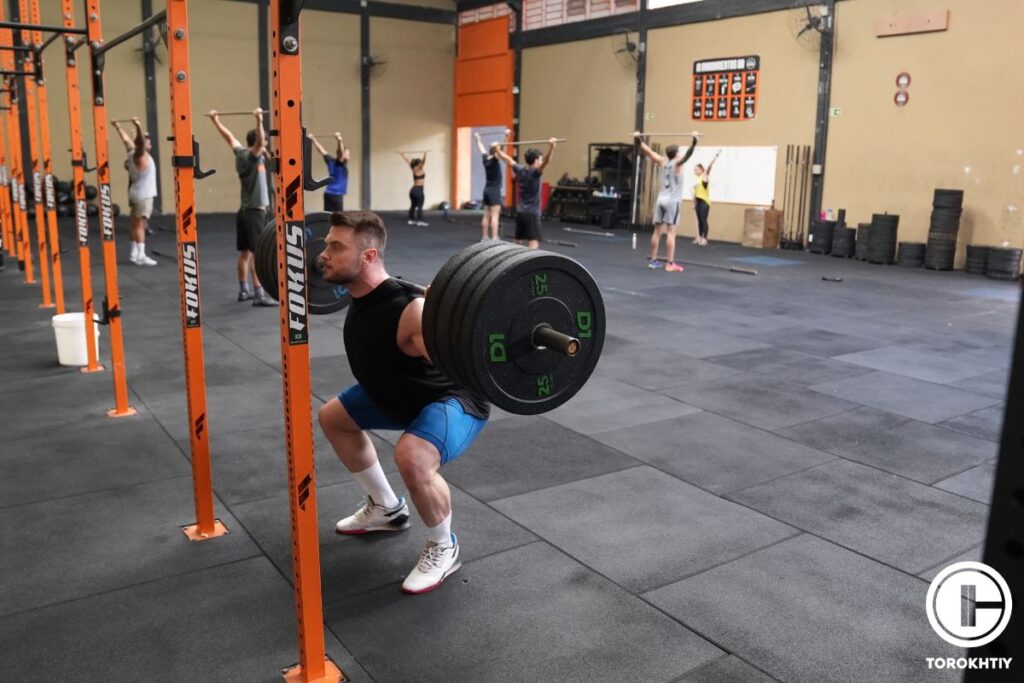
2. Calf Targeted Squat Variations
Traditional squats may not be crazy effective for calves, but there are some squat variations you can do that will be a lot better. Squats can be modified here and there, and depending on the modification, it changes the muscles that are engaged.
One of these variations is the toe-pointed squat, where you turn your feet outward a little. This change might seem almost insignificant, but when you point your feet in a different direction, you place more focus on your calves during squatting. It alters the biomechanics, so the calves contract more than they do with traditional squats.
The calf raise squat, or calf squats, is another type where the movement extends beyond the standard squat by incorporating calf raise at the top of the motion. As you go up from the squat, lift your heels off the ground, elevating onto the balls of your feet, and squeeze your calves.
You can also do a goblet squat with a calf raise. Hold a weight close to your chest and do a traditional squat, but as you go back to the standing position, transition into a calf raise. These squats for calves will engage your quads, glutes, and hamstrings, but it will place a significant amount of tension on your calves, as well.
Follow us!

Free!
Get a 2-week Weightlifting Program as a bonus for the subscription to kickstart your training plan!

Free!
5 More Effective Exercises For Training Calves
Squats should have a place in your training routine, but if you want to build your calves, there are better ways of going about that than just squatting.
1. Standing Calf Raises
It’s a classic for a reason – standing calf raises target the gastrocnemius muscle, which is what you need for defined, strong calves. Stand with your feet hip-width apart and lift your heels as high as you can, then lower them. You’ll get a full range of motion and activate the entire calf muscle.
2. Seated Calf Raises
You need to exercise the soleus muscle, too, and seated calf raises are a great way to do that. You do them sitting on a bench or chair with a weight placed on your thighs. Place the balls of your feet on a block or step and lift your heels as high as possible. Then, lower them below the level of the block. This exercise gives you a unique angle for isolating the soleus muscle.
3. Calf Press on the Leg Press Machine
If you use a leg press for your calf raises, you’ll add some versatility to your training. Get on the machine and place the balls of your feet on the footplate. Push through your toes, extend your ankles, and lift the weight. This is a fantastic workout because it engages both muscles in your calves.
4. Jump Rope
Jump rope is great cardio, but it’s also a good way to target your calves. Since you’re jumping continuously, your calf muscles are engaged all the time. If you want the exercise to be even more effective, vary your speed and incorporate intervals to challenge your calves in different ways.
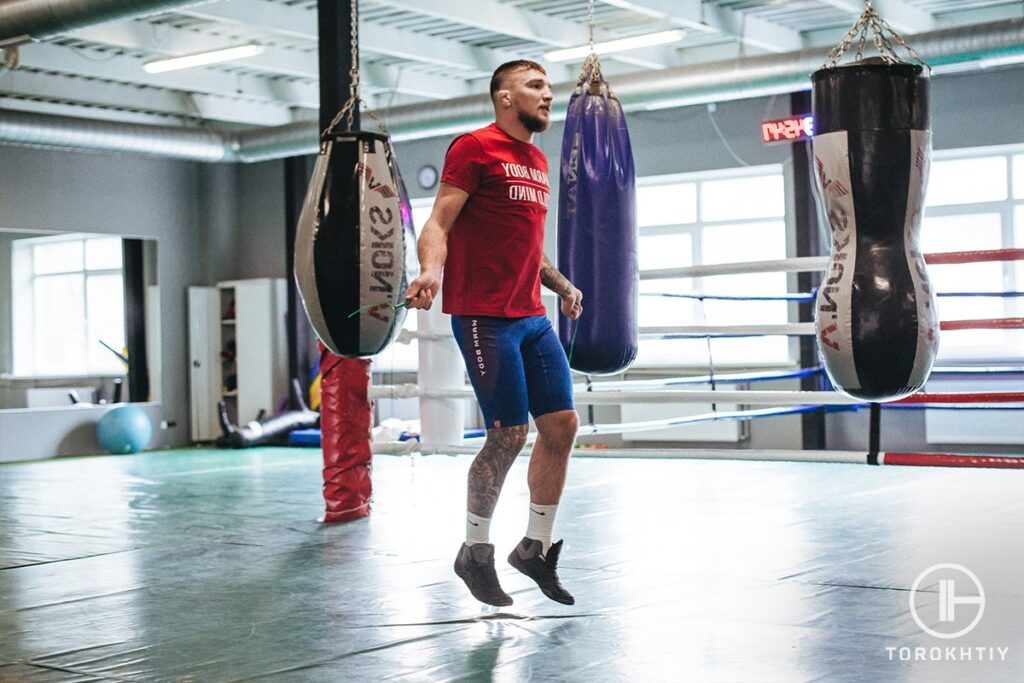
5. Calf Raises on a Smith Machine
The Smith machine gives you stability for calf raises and allows you to completely focus on your calves. Get under the bar, place the balls of your feet on an elevated surface, and lift your heels. Lower them below the level of the platform for a complete range of motion, and to target both of the muscles – the gastrocnemius and the soleus.
FAQ
Should My Calves Hurt After Squats?
Not all pain is bad, but your calves shouldn’t hurt too much. It’s normal to have some mild soreness because that’s what happens after every effective workout, but if you’re in a lot of pain, and the pain is not going away, you need to get it checked out.
Do Front Squats Hit Calves?
Front squats focus mostly on your quads and glutes. They will engage your calves up to a point, but you shouldn’t look at front squats as a way to get defined calves. If you want strong, defined calves, you need to do exercises that target them directly.
Conclusion
Whew… A lot of squat talk, but everybody should do squats because they are fantastic and have a ton of benefits. But don’t be unrealistic and expect them to define your entire body. If you want to focus on something specifically, in this case the calves, you need exercises that focus on them primarily. Squats will complement your training routine, but they’ll mostly work on your glutes and quads.
Do you squat, and why? Have you had any improvements in areas that are not your glutes and quads? What do you think is the most effective exercise for calves?
Let’s build stronger calves together – so be sure to leave any tips and tricks, secrets/hints, or experience you have to get defined squats!
Cheers!
Also Read:
- What Muscles Do Squats Work? (Lifting Coach Explains)
- How to Breathe During Squats? Techniques and Exercises
- How To Increase Squat Weight (Tips & Exercises from PhD)
- Do Squats Work Hamstrings? Which Squat Type to Choose?
- Squat Pyramid: What Is It & How To Create Your Own
- Safety Bar Squats: Form & Benefits Explained
- Spotter’s Handbook: How to Spot a Squat?
- Best Squat Warm-Up For Peak Performance
References:
- Aaron A. Shaner, Jakob L. Vingren, Disa L. Hatfield, Ronald G. Budnar Jr., Anthony A. Duplanty, David W. Hill “The acute hormonal response to free weight and machine weight resistance exercise,” Journal of Strength and Conditioning Research 28, no. 4 (2014): 1032-1040.
- David Bautista, Dustin Durke, Joshua A. Cotter, Kurt A. Escobar, Evan E. Schick “A Comparison of Muscle Activation Among the Front Squat, Overhead Squat, Back Extension and Plank,” International Journal of Exercise Science 13, no. 1 (2020): 714-722.
- Kate Neudecker “Learn How to Do Front Squats to Fire up Your Quads and Light up Your Core,” Men’s Health, https://www.menshealth.com/uk/how-tos/a735538/front-squat/ (accessed February 16th, 2024)
- Lindsay V. Slater, Joseph M Hart, “Muscle Activation Patterns During Different Squat Techniques,” Journal of Strength and Conditioning Research 31, no. 3 (2017): 667-676.
- Michal Wilk, Miroslav Petr, Michal Krzysztofik, Adam Zajac, Petr Stastny, “Endocrine response to high intensity barbell squats performed with constant movement tempo and variable training volume,” Neuro Endocrinology Letters 39, no. 4 (2018): 342-348.
- Photos by Torokhtiy Media Team.
Why Trust Us?
With over 20 years in Olympic weightlifting, strength training, nutrition coaching, and general fitness our team does its best to provide the audience with ultimate support and meet the needs and requirements of advanced athletes and professional lifters, as well as people who strive to open new opportunities and develop their physical capabilities with us.
By trusting the recommendations of our certified experts in coaching, nutrition, and sports training programming, as well as scientific consultants, and physiotherapists, we provide you with thorough, well-considered, and scientifically proven content. All the information given in the articles concerning workout programming, separate exercises, and athletic performance, in general, is based on verified data.
The product testing process is described in more detail here.
Author: Jason Li
Personal Coach, Functional Range Conditioning Mobility Specialist
Jason is an NYC personal training expert and National level Olympic Weightlifting Coach with over 10 years of experience training everyday clients to high levels of performance. He has trained everyone from youth (13 years old and under) to masters (60+ years old) to regional and national rankings for powerlifting, Olympic Weightlifting, Short distance (up to 200m) sprinting, discus & hammer throwing.
Reviewed by: Oleksiy Torokhtiy
Olympic Weightlifting Champion, PhD in Sport Science
Best Results: Snatch – 200 kg,
C&J – 240 kg
Oleksiy Torokhtiy is a professional athlete boasting 20 years of experience in Olympic weightlifting. With multiple European and World titles under his belt, he has showcased his prowess in two Olympic Games (Beijing 2008 and London 2012). Upon concluding his illustrious career, Oleksiy dedicated himself to coaching. By 2022, he had conducted over 200 weightlifting seminars worldwide. He is the visionary behind an international sportswear and accessories brand known for its motto, “Warm Body Cold Mind.” Additionally, he is an esteemed author and the creator of a series of training programs and eBooks.




Still have questions after reading our article? Unlock your full potential by engaging with our experts and community! Don’t hesitate — leave a comment below and Jason Li will provide a personalized answer and insights to help you reach your goals.